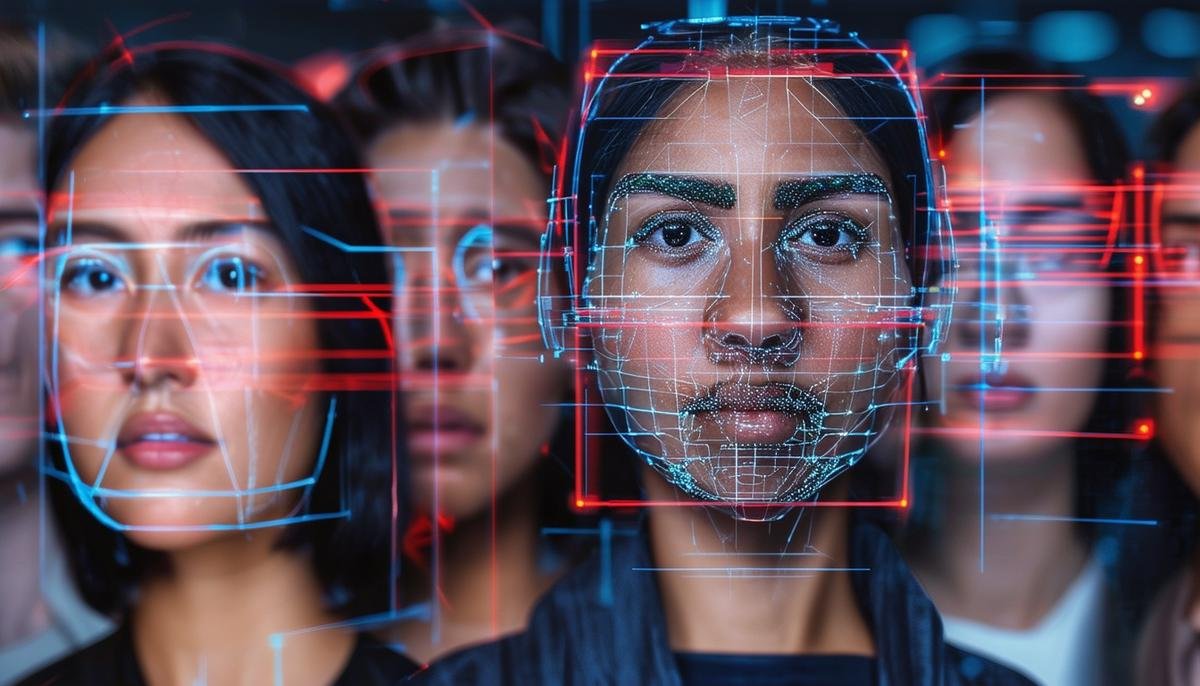Artificial Intelligence (AI) has significantly impacted surveillance, bringing advanced capabilities that surpass traditional methods. By automating data analysis and pattern recognition, AI offers precision and efficiency that enhances safety and security. However, this technological advancement also raises important ethical and privacy concerns that need careful consideration.
Understanding AI in Surveillance
AI has transformed surveillance by enhancing data analysis, pattern recognition, and real-time monitoring capabilities. Unlike traditional surveillance methods that primarily rely on human operators, AI can process vast amounts of data swiftly and accurately. AI’s ability to learn from historical data allows it to identify patterns and anomalies that might elude human observers.
A key difference between AI and traditional surveillance methods is the automation and efficiency AI provides. Traditional methods require constant human oversight, which can lead to fatigue and missed details. AI operates continuously, providing round-the-clock monitoring and analysis. For instance, AI can automatically flag unusual activities or behaviors for human review, reducing the workload on human operators and improving response times.
AI’s Advanced Capabilities:
- Facial recognition technology
- Behavioral analysis
- Continuous learning and improvement
AI’s ability to learn and improve over time means that surveillance systems become more accurate and effective as they gather more data. This constant improvement cycle is something traditional surveillance systems lack, as they depend heavily on human operators who may not consistently perform at their best.
However, integrating AI into surveillance isn’t without challenges. Issues like data privacy, algorithmic bias, and the potential for misuse are significant concerns. For example, AI systems can inadvertently invade privacy by collecting and analyzing personal information without explicit consent. Biases in the training data can lead to unjust profiling and discrimination, necessitating strict checks and balances to mitigate these risks.

Privacy Concerns and Data Protection
AI surveillance systems often require large datasets to function effectively, which typically include personal information. This data collection raises substantial privacy concerns.
One primary concern is the extent of data being gathered. AI surveillance solutions can capture vast amounts of data, including video footage, audio recordings, location data, and biometric information. This volume of data can make individuals feel like their every move is being watched and recorded, leading to privacy invasion concerns. Without strict regulations and oversight, this information can be collected without individuals’ knowledge or explicit consent.
The way data is stored and protected is another focal point of privacy concerns. Data breaches can lead to identity theft, blackmail, or other malicious activities. This risk requires strong security measures to safeguard collected data. Encryption, regular security audits, and compliance with data protection regulations can provide additional layers of security.
“The potential for misuse of AI surveillance is significant. There have been instances where surveillance technology, especially facial recognition, has been used to discriminate against certain groups or to unjustly monitor political dissidents and activists.”
Measures to Maintain Data Privacy:
- Adopting a privacy-by-design approach
- Obtaining informed consent from individuals
- Implementing strict access controls
- Employing data minimization strategies
Balancing the benefits of AI in surveillance with the need to protect individual privacy is an ongoing challenge. By implementing strong data protection measures, adhering to ethical guidelines, and maintaining transparency with the public, it’s possible to harness the power of AI while respecting and safeguarding individual privacy rights.

Bias and Fairness in AI Surveillance
Bias in AI surveillance, especially in facial recognition technology, is a significant concern. AI systems learn from historical data, and if this data contains inherent biases, the AI can inadvertently perpetuate or amplify these biases. This has serious implications, particularly in surveillance where errors can lead to grievous outcomes.
Facial recognition technology has been particularly problematic in this regard. Studies have highlighted how these systems tend to misidentify individuals from certain demographics more frequently than others. For instance, research has found that facial recognition algorithms exhibited higher error rates when identifying women, older adults, and people of color1.
The case of Robert Williams in 2020 highlights the impact of biased algorithms. Williams, an African American man, was wrongfully arrested in Detroit due to a false match by a facial recognition system. This case underscores the profound impact biased algorithms can have on people’s lives2.
Addressing Bias and Ensuring Fairness:
- Using diverse and representative datasets for training
- Implementing thorough testing and validation processes
- Continual monitoring and updating of algorithms
- Transparency about system limitations and potential biases
- Establishing and enforcing ethical guidelines and regulations
By prioritizing the development of unbiased, fair, and transparent AI systems, it’s possible to leverage the benefits of AI surveillance while upholding the fundamental principles of justice and equality.

Transparency and Accountability
Transparency and accountability are crucial in the deployment of AI surveillance systems. Clear communication about surveillance practices is essential for cultivating trust and ensuring ethical use of AI.
Key Aspects of Transparency:
- Informing the public when and where surveillance is taking place
- Providing accessible policies and documentation
- Obtaining consent when possible
- Communicating data collection and usage practices
Accountability Mechanisms:
- Establishing clear guidelines and regulations
- Conducting regular audits and independent oversight
- Implementing grievance redressal mechanisms
- Holding developers and operators to ethical standards
By adhering to these principles, it’s possible to leverage the benefits of AI surveillance while maintaining public trust and safeguarding individual privacy rights.

Regulatory and Legal Frameworks
The regulatory and legal frameworks surrounding AI surveillance are essential for ensuring ethical practices and protecting individual rights. Various laws and regulations have been established globally to govern the implementation and use of AI in surveillance, addressing concerns related to privacy, data protection, and accountability.
The General Data Protection Regulation (GDPR) in the European Union sets stringent requirements for data protection and privacy. It emphasizes:
- Lawful processing of personal data
- Transparency
- Data minimization
- Explicit consent
For AI surveillance, this means data collection must have a clear purpose, be minimized to what is necessary, and individuals must be informed about its collection and use. The GDPR also mandates strong measures to protect data from breaches and gives individuals the “right to be forgotten.”
Australia’s Privacy Act of 1988 regulates the handling of personal information by government agencies and private sector organizations. It outlines principles similar to GDPR, emphasizing transparency, data minimization, and secure data handling. It also establishes individuals’ rights to access and correct their personal information.
In the United States, the regulatory landscape is more fragmented, with various state laws and sector-specific regulations. The California Consumer Privacy Act (CCPA) grants California residents significant rights concerning their personal data, including:
- Knowing what data is collected
- Understanding to whom it is sold or disclosed
- The right to access and delete their data
China has implemented strict regulations on surveillance technology, particularly within its social credit system. These regulations mandate responsible handling of personal data, requiring clear justification for data collection and ensuring data security.
Implications for Ethical AI Use in Surveillance
Adherence to these regulatory frameworks has significant implications for the ethical use of AI in surveillance. Organizations must:
- Establish effective compliance programs, including regular audits and employee training
- Develop comprehensive privacy policies that align with regulatory requirements
- Ensure transparency and accountability in their surveillance practices
- Implement end-to-end encryption, anonymize data, and establish secure data storage and transmission methods
- Prioritize obtaining informed consent and provide mechanisms for individuals to exercise their rights
Compliance often requires substantial investment in technology and infrastructure, but it is crucial for maintaining ethical standards in AI surveillance.

Future Directions and Innovations
Emerging trends in AI surveillance indicate a shift towards enhancing privacy and ensuring ethical deployment. Several promising innovations are addressing current challenges and setting new standards for responsible AI use.
Privacy-Preserving AI
Privacy-preserving AI is a key area of advancement. Techniques such as differential privacy and federated learning aim to minimize data collection and ensure stringent privacy safeguards.
“Differential privacy adds controlled noise to datasets to prevent individual identification while allowing meaningful analysis.”
Federated learning enables AI models to be trained across multiple decentralized devices or servers without transferring data to a central location, enhancing data privacy.
Explainable AI (XAI)
The development of explainable and interpretable AI systems is another promising innovation. XAI aims to create models that offer clear, understandable explanations of their processes and decision-making criteria, fostering greater transparency and accountability.
Future Regulatory Frameworks
Future regulatory frameworks are likely to build on existing laws, incorporating more refined guidelines specific to AI technologies. These may include:
- Stricter data protection measures
- More rigorous consent protocols
- Enhanced individual rights to control personal data
There is also a growing call for global standards and cooperative regulatory efforts to create consistent ethical standards across borders.
AI Ethics Boards
The development of AI ethics boards and committees within organizations is another potential area of growth. These entities would oversee the deployment and operation of AI technologies, ensuring ethical considerations are at the forefront of decision-making processes.
Public Engagement and Education
Public engagement and education will be vital in the effective implementation of future AI surveillance systems. Raising awareness about how AI surveillance works, its benefits, and privacy protections can help build trust among individuals.
Balancing innovation with ethical considerations will be key to the future of AI surveillance. By leveraging advancements in privacy-preserving AI, fostering transparency through explainable AI, and adhering to effective regulatory frameworks, it is possible to create surveillance systems that are both effective and respectful of individual rights.

Implementing strong data protection measures, adhering to ethical guidelines, and maintaining transparency with the public are crucial steps in balancing the benefits of AI surveillance with privacy protection. By focusing on these principles, we can harness the power of AI while safeguarding individual privacy rights.




